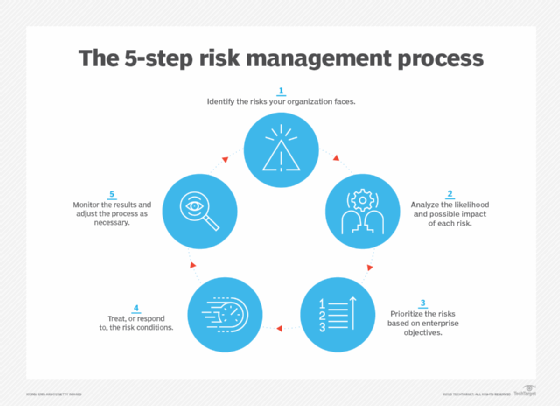How the Importance of Risk Management Shapes Strong Leadership
How the Importance of Risk Management Shapes Strong Leadership
Blog Article
The Importance of Comprehending the Significance of Risk Management in Various Industries

The Core Concept of Risk Management and Its Function
Risk Management, the cornerstone of many industries, pivots on the recognition, analysis, and reduction of unpredictabilities in a business environment. By appropriately determining prospective dangers, organizations can establish approaches to either avoid these threats from happening or minimize their influence. As soon as dangers have actually been identified and evaluated, the mitigation procedure includes developing strategies to lower their prospective impact.
Advantages of Executing Risk Management in Organization Workflow

Revealing the Role of Risk Management in Different Industries
While every market challenges its special set of threats, the application of Risk Management techniques stays a common in their pursuit of sustainability and growth. In the healthcare sector, Risk Management entails ensuring individual safety and security and data defense, while in money, it entails mitigating financial investment threats and ensuring regulatory conformity (importance of risk management). Building and construction business focus on employee safety, job hold-ups, and budget plan overruns. In the modern technology industry, business alleviate cybersecurity dangers and modern technology obsolescence. Ultimately, the role of Risk Management across industries is to determine, examine, and mitigate threats. It is an important part of strategic planning, making it possible for companies to secure their assets, make best use of chances, and attain their goals.
Real-life Study Demonstrating Effective Risk Management
To comprehend the importance of Risk Management in these many industries, one can look to several real-life circumstances that illustrate the successful application of these actions. Toyota, publish the 2011 quake in Japan, revised its supply chain Management to minimize interruption threats. These cases demonstrate just how markets, finding out from dilemmas, successfully applied Risk Management approaches to decrease future dangers.
Future Patterns and Growths in Risk Management Methods
Cybersecurity, as soon as an outer worry, has catapulted to the leading edge of Risk Management, with approaches concentrating on prevention, detection, and reaction. The combination of ESG (Environmental, Social, Administration) elements right into Risk Management is an additional expanding pattern, a knockout post reflecting the enhancing acknowledgment of the function that environmental and social threats play in company sustainability. Hence, the future of Risk Management exists in the blend of sophisticated modern technology, innovative approaches, and an alternative strategy.
Conclusion
In final thought, understanding the importance of Risk Management across a read what he said spectrum of industries is crucial for their longevity and prosperity. Eventually, effective Risk Management adds to a lot more resistant and sustainable services, highlighting the value of this practice in today's dynamic and highly affordable business setting.
While every sector challenges its unique set of dangers, the execution of Risk Management methods continues to be a common in their search of sustainability and development. In the health care field, Risk Management requires making sure patient safety and information security, while in financing, it includes mitigating investment risks and guaranteeing regulative compliance. Eventually, the function of Risk Management across industries is to identify, analyze, and minimize risks. These cases show exactly how industries, finding out from dilemmas, efficiently applied Risk Management strategies to lower future dangers.

Report this page